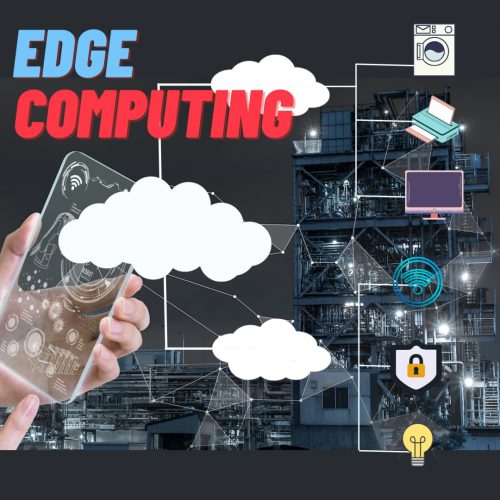
Although we talked about the 5G era which is all about digitalization, “data is the lifeblood of business” is way earlier than it came. Data provides valuable business insight and supports real-time control over critical business processes and operations. That’s why edge computing comes to the place once 5G & IIoT are bumped together. Edge computing is a distributed computing paradigm that brings computation and data storage closer to the sources of data. This is expected to improve response times and save bandwidth. A more specific saying is any type of computer program that delivers low latency nearer to the requests. It’s often used synonymously with fog computing (but not really the same thing).
In the past, device-generated data were sent to a centralized data center and it caused bandwidth and latency issues. Edge computing technology offers a more efficient alternative. Data is processed and analyzed closer to the point where it’s created so the latency is significantly reduced. Combining with 5G networks, it enables faster and more comprehensive data analysis, creating the opportunity for deeper insight in a fast response time manner.
How does edge computing work? First of all, edge computing puts storage and servers where the data is gathered. It requires operating on the remote LAN thus data can be collected and processed locally. Due to the nature of its location, the enclosure of storage and servers would be more rugged designs, protecting from extremes of temperature, moisture, and other environmental conditions. Processing often involves normalizing and analyzing the data stream for business intelligence*. Only the results of the analysis are sent back to the principal data center.
Even though we’ve heard many compelling benefits across different fields. You still need to evaluate some challenges carefully before jumping into implementation.
Considerations For Edge Computing
1. Limited capability
Deploying an infrastructure at the edge can be effective, but you need to define the scope and purpose clearly beforehand then you can make it as the best fit.
2. Connectivity
The environment of an edge deployment is unstable. To accommodate poor or erratic connectivity and consider what happens at the edge when connectivity is lost will be important.
3. Security
It’s always a big issue/risk for IIoT solutions.
4. Data lifecycles
Most of the data involved in real-time analytics are short-term data, so a business must decide which data to keep and what to discard.
Edge computing is a perfect idea that might look easy on paper but implementation can be quite challenging. A well-considered procedure can help you with the highest ROI possible. In the next article, we want to introduce a similar technology, cloud computing. See you then!
Business intelligence (BI): It refers to the procedural and technical infrastructure that collects, stores, and analyzes the data produced by a company’s activities which may help a business to optimize its decisions.
Let's get more info on Smart Manufacturing
Get to know more about IPC news, join our

Netio Technologies
Your Best Design Partner !




